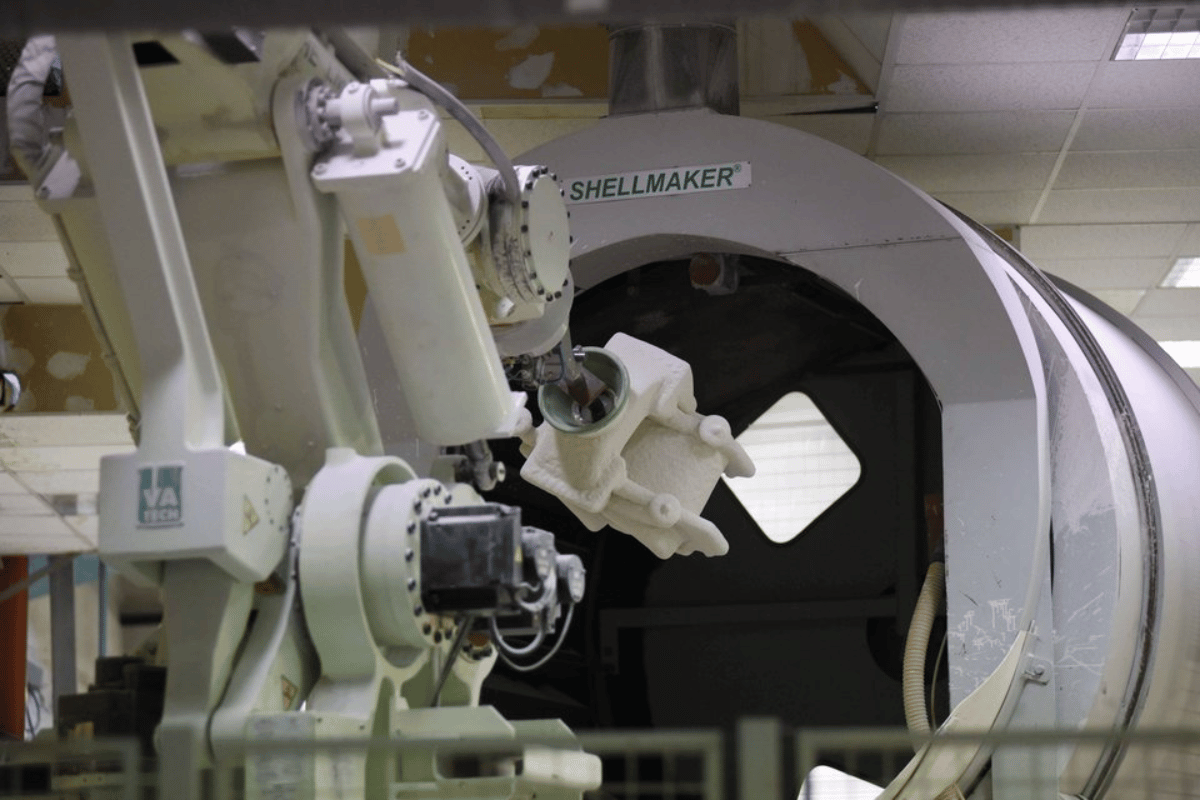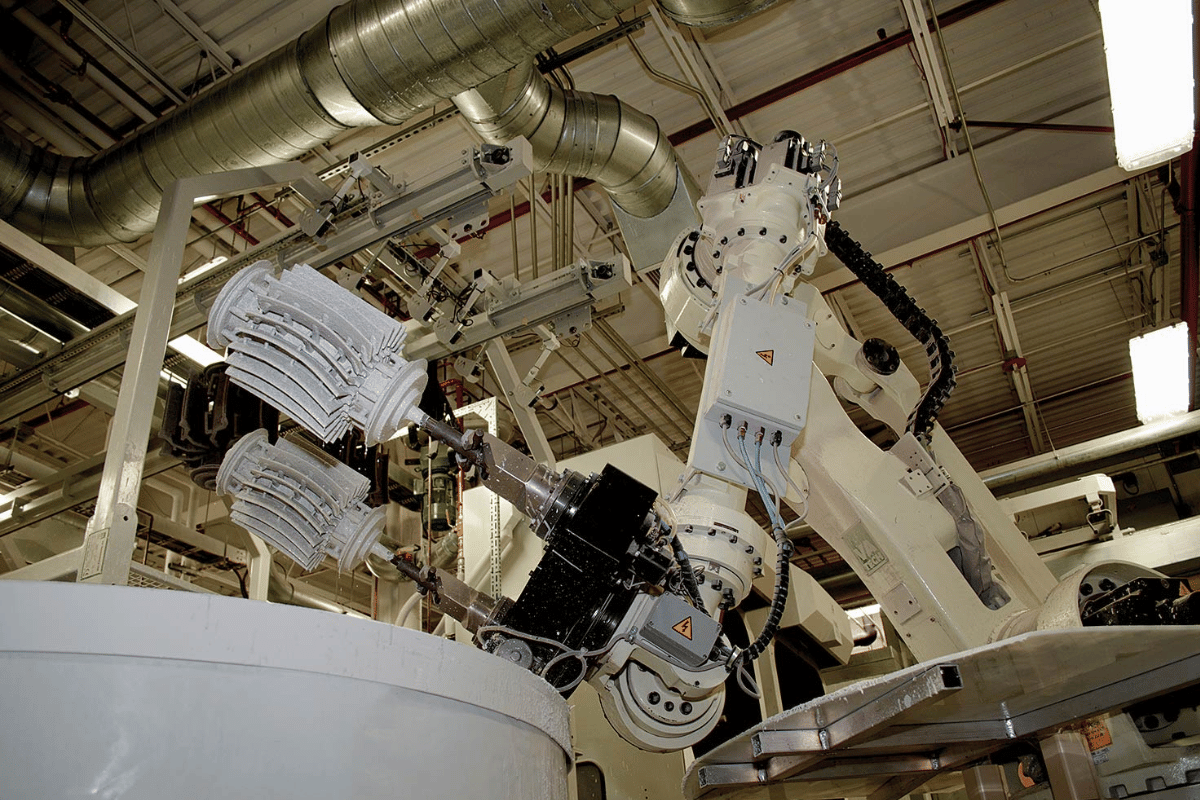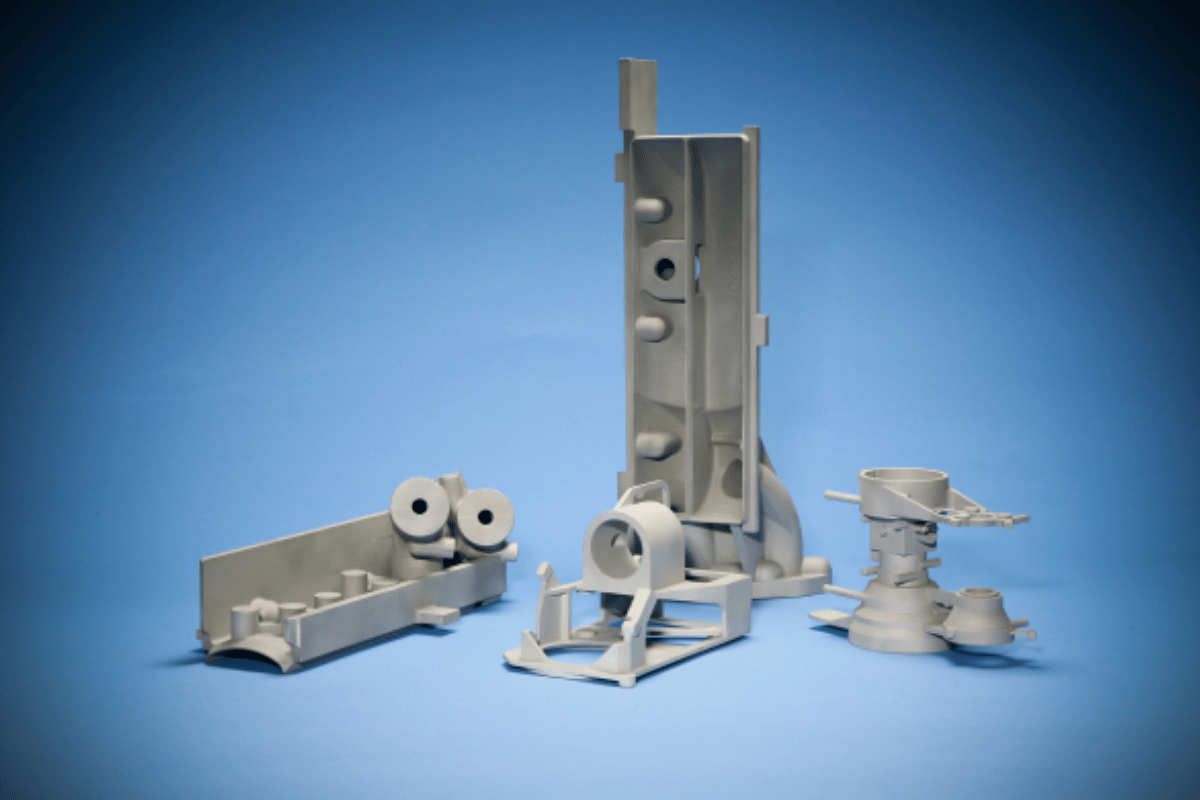In the realm of modern manufacturing, the concept of CNC-enhanced high-quality investment casting has emerged as a driving force behind precision and innovation. This process holds immense significance across diverse industries, revolutionizing the way intricate components are produced. High-quality investment casting, often dubbed as a cornerstone of precision engineering, ensures the creation of intricate parts with remarkable accuracy and integrity.
Today’s manufacturing demands go beyond traditional methods. Precision has become paramount, driven by the need for intricate designs and optimal performance. CNC-enhanced high-quality investment casting aligns perfectly with this requirement, blending the art of casting with the science of computer numerical control (CNC). This marriage of artistry and technology results in the production of components that meet the stringent demands of various sectors.
The fusion of CNC technology with investment casting techniques enables manufacturers to create intricate patterns and molds with unparalleled precision. This empowers industries to fabricate complex parts that were once deemed nearly impossible to achieve with traditional methods alone. The benefits of CNC-enhanced casting ripple across multiple sectors, from aerospace to automotive, medical to machinery.
As we delve deeper into the following sections, we will explore the fundamental aspects of high-quality investment casting, shedding light on its benefits. We will also uncover the pivotal role that CNC technology plays in elevating the investment casting process, enhancing precision, efficiency, and ultimately transforming industries.

High-Quality Investment Casting: Basics and Benefits
High-quality investment casting stands as a testament to the marriage of artistry and technology, resulting in the production of intricate components with exceptional precision. This advanced casting technique holds several distinct advantages over conventional methods, making it a preferred choice for industries that demand the utmost accuracy and reliability.
One of the key benefits of high-quality investment casting lies in its ability to achieve an impeccable surface finish. The intricate details of patterns and molds are faithfully reproduced in the final product, eliminating the need for extensive post-casting finishing processes. This not only saves time but also ensures that the components meet stringent quality standards right from the outset.
Dimensional accuracy is another hallmark of high-quality investment casting. The precision achievable through this technique is unparalleled, allowing manufacturers to create parts with incredibly tight tolerances. Whether it’s aeronautical components that demand precise fits or medical devices that require exact measurements, investment casting delivers the required accuracy consistently.
Moreover, the integrity of materials used in the casting process remains un compromised. The controlled environment in which investment casting takes place prevents contamination and ensures the structural soundness of the components. This is particularly critical in applications where safety and reliability are of paramount importance, such as in the aerospace and medical sectors.
In industries where intricate geometries and complex designs are the norm, high-quality investment casting shines brightest. The versatility of this technique means that engineers and designers are not limited by traditional manufacturing constraints. Intricate cooling channels in automotive parts, delicate filigree in jewelry, and complex contours in turbine blades—all can be faithfully produced using this method.
In the following sections, we will explore the pivotal role played by CNC technology in elevating the investment casting process. By integrating CNC technology into various stages of casting, manufacturers are able to push the boundaries of precision and efficiency, redefining what is possible in the realm of modern manufacturing.

Role of CNC Technology in Investment Casting
The integration of CNC technology has ushered in a new era of possibilities in the realm of investment casting. This sophisticated technology has seamlessly woven itself into every stage of the casting process, augmenting precision and efficiency in ways previously unattainable. Let’s delve into the various facets of investment casting where CNC technology has made a resounding impact.
Pattern Making: The foundation of investment casting lies in pattern making—a process that has been revolutionized by CNC technology. Intricate patterns that once required painstaking manual craftsmanship can now be digitally designed and precisely machined using CNC techniques. This ensures consistency and accuracy across multiple castings, reducing variability and improving overall quality.
Mold Production: CNC technology plays a pivotal role in creating molds for investment casting. Complex molds with intricate cavities and features can be accurately machined, ensuring that each mold is a faithful replica of the desired component. This level of precision minimizes defects and ensures that the final castings meet exact specifications.
Wax Injection: The precision of CNC extends to wax pattern production, a critical step in investment casting. CNC-controlled equipment ensures the accurate injection of wax into molds, capturing even the most intricate details. This precise wax pattern serves as the basis for the ceramic shell that will later encase the molten metal.
Shell Building: CNC technology continues to shine during shell building, where ceramic shells are constructed around the wax patterns. Intricate layering and precise shell thickness are achieved through CNC-controlled processes. This consistency in shell building contributes to uniform heat distribution during the casting process, further enhancing the quality of the final component.
Finishing: Even after casting is complete, CNC technology remains indispensable. CNC machining is employed to achieve final dimensions and surface finish, ensuring that the cast components adhere to the highest quality standards. This level of precision in finishing minimizes the need for post-casting machining, reducing overall production time.
The marriage of CNC technology with investment casting has led to an evolution in precision, repeatability, and efficiency. Manufacturers can now produce intricate components with confidence, knowing that CNC-controlled processes are driving consistency and accuracy. This integration has a profound impact on various industries, optimizing their manufacturing processes and enabling the creation of components that meet the demands of modern engineering.
In the subsequent sections, we will delve deeper into how CNC technology enhances precision and efficiency in the investment casting process, fostering innovation and transforming industries in the process.
Enhancing Precision and Efficiency
The marriage of CNC technology with investment casting has brought about a paradigm shift in the precision and efficiency of the manufacturing process. This union of artistry and technology has not only elevated the quality of components but has also streamlined production, reducing waste and lead times. Let’s explore how CNC technology enhances precision and efficiency in the realm of investment casting.
Reduced Material Waste: CNC-enhanced investment casting significantly reduces material waste by ensuring that every step of the process is optimized. The precise machining of patterns, molds, and shells minimizes excess material usage. This accuracy extends to the casting itself, where CNC-controlled pouring ensures that molten metal is distributed exactly where needed, eliminating unnecessary overflow.
Increased Repeatability: The digital precision of CNC technology brings unprecedented repeatability to investment casting. Once a design is programmed and perfected, it can be replicated with incredible accuracy across multiple castings. This consistency is crucial in industries where identical components are required, such as in aerospace and medical applications.
Shortened Lead Times: Traditional investment casting processes often involve manual steps that can be time-consuming. CNC technology expedites these steps, reducing the time required for pattern making, mold production, and finishing. Additionally, the accuracy of CNC machining means that fewer iterations are needed, further shortening the overall lead time from design to finished product.
Enhanced Complex Geometries: Intricate and complex designs, once challenging to produce with traditional methods, are now achievable through CNC-enhanced investment casting. This capability empowers engineers to push the boundaries of design, creating components with intricate cooling channels, fine lattice structures, and complex contours. This freedom of design is particularly advantageous in industries like aerospace, where lightweight and efficient components are crucial.
Streamlined Prototyping: CNC technology has revolutionized prototyping within the investment casting process. Design iterations can be quickly translated into precise prototypes, allowing for thorough testing and validation before full-scale production. This minimizes the risk of errors and ensures that the final components meet the desired specifications.
The integration of CNC technology into investment casting not only enhances precision but also drives efficiency at every stage. The reduction in material waste, increased repeatability, shortened lead times, and the ability to create intricate geometries all contribute to a manufacturing process that is aligned with the demands of modern industry.
In the upcoming sections, we will delve into the industries that have been transformed by CNC-enhanced high-quality investment casting. From aerospace to automotive, medical to machinery, the impact of this technology is far-reaching and profound.

Industries Transformed by CNC-Enhanced Investment Casting
The transformative power of CNC-enhanced high-quality investment casting reverberates across a multitude of industries, reshaping the way components are manufactured and advancing the capabilities of various sectors. Let’s delve into the industries that have embraced this technology-driven evolution and are reaping its benefits.
Aerospace Industry: Precision and reliability are paramount in the aerospace sector, where components must endure extreme conditions and rigorous demands. CNC-enhanced investment casting plays a pivotal role in producing intricate turbine blades, engine components, and structural parts. The ability to create complex geometries with exceptional accuracy is a game-changer, enabling lighter and more fuel-efficient aircraft.
Automotive Sector: The automotive industry thrives on innovation and efficiency. CNC-enhanced investment casting facilitates the creation of complex automotive components, from engine parts to transmission housings. The precision achieved through CNC technology ensures optimal performance, durability, and reduced weight. This contributes to improved fuel economy and enhanced overall vehicle performance.
Medical Field: In the medical sector, precision and biocompatibility are critical. CNC-enhanced investment casting allows for the production of intricate medical implants, prosthetics, and surgical instruments. The high accuracy of CNC-controlled processes ensures a perfect fit and minimizes the risk of complications, ultimately benefiting patient outcomes.
Machinery and Equipment Manufacturing: CNC-enhanced investment casting finds application in the production of machinery and equipment used across various industries. From industrial pumps to complex gear systems, the ability to create intricate and precise components enhances the reliability and efficiency of these machines.
Jewelry and Art: Even in the realm of artistic expression, CNC-enhanced investment casting leaves its mark. Jewelry designers can craft intricate and delicate pieces with unprecedented precision. This technology allows for the creation of fine details and intricate patterns that were previously challenging to achieve through traditional methods.
Energy Generation: Components used in energy generation, such as turbine parts for power plants, benefit from the precision and durability offered by CNC-enhanced investment casting. These components are subjected to high temperatures and stresses, making precision casting essential for their performance and longevity.
Electronics Manufacturing: The electronics industry demands intricate components for devices ranging from smartphones to advanced electronics systems. CNC-enhanced investment casting aids in the production of precision electronic components, ensuring optimal performance and reliability.
The adoption of CNC technology in investment casting has redefined the possibilities across these industries. By enhancing precision, reducing waste, and expediting production, CNC-enhanced high-quality investment casting empowers sectors to deliver superior products that meet the demands of modern engineering and innovation.
In the subsequent section, we will explore the European innovations in CNC-enhanced investment casting, highlighting the contributions made by companies, technologies, and research initiatives in the region.
European Innovations in CNC-Enhanced Investment Casting
The European landscape is dotted with remarkable innovations in the realm of CNC-enhanced investment casting. This region has emerged as a hub of cutting-edge technologies, pioneering companies, and collaborative research initiatives that are pushing the boundaries of what is achievable in precision manufacturing. Let’s delve into some of the noteworthy contributions from Europe in the field of CNC-enhanced investment casting.
Advanced Materials Research: European research institutions have been at the forefront of developing new and advanced materials that complement CNC-enhanced investment casting. These materials offer improved heat resistance, durability, and mechanical properties, expanding the potential applications of precision casting across various industries.
Integrated Design and Manufacturing: European companies have championed the integration of design and manufacturing processes. Through sophisticated CAD/CAM software and CNC technology, designers and engineers can seamlessly translate their ideas into intricate cast components. This synergy between design and manufacturing reduces errors and optimizes production.
Industry Collaboration: The European landscape encourages collaboration between industries, research institutions, and technology providers. This collaborative spirit has led to the development of specialized equipment and techniques tailored to the needs of CNC-enhanced investment casting. The pooling of expertise has accelerated advancements in the field.
Sustainable Practices: European initiatives in precision manufacturing also emphasize sustainability. CNC-enhanced investment casting aligns with these values by reducing material waste and energy consumption. The implementation of cleaner manufacturing processes contributes to environmental conservation.
Innovative Prototyping: European companies have harnessed CNC technology for rapid prototyping within the investment casting realm. This facilitates iterative design and testing, allowing for the development of high-quality prototypes with precision and speed.
Automated Inspection: Inspection and quality control are critical in precision manufacturing. European innovations have seen the integration of automated inspection systems that use advanced sensors and imaging techniques to ensure the accuracy and integrity of cast components.
Micro-Casting Advancements: European research has delved into micro-casting techniques, enabling the production of intricate micro-components with CNC-enhanced investment casting. These micro-components find applications in fields such as electronics and medical devices.
The European contributions to CNC-enhanced investment casting underscore the region’s commitment to innovation, precision, and sustainability. The advancements emerging from Europe continue to shape the global landscape of manufacturing, empowering industries with transformative technologies and capabilities.
In the concluding section, we will summarize the profound impact of CNC-enhanced high-quality investment casting on industries, reiterating its role in fostering precision, efficiency, and innovation.
Aluminum Casting – Aluminum Investment Casting Video
Conclusion: Empowering Industries
In the world of modern manufacturing, CNC-enhanced high-quality investment casting stands as a testament to the synergy between precision, efficiency, and innovation. This remarkable fusion of artistry and technology has reshaped industries, delivering components of unparalleled accuracy, integrity, and complexity. As we conclude our exploration, let’s revisit the transformative impact of CNC-enhanced investment casting on industries.
The precision achieved through CNC technology has revolutionized the production of intricate components across sectors such as aerospace, automotive, medical, machinery, and beyond. With the ability to create complex geometries and achieve tight tolerances, manufacturers can meet the demands of modern engineering and design.
Efficiency has also been greatly enhanced. By reducing material waste, increasing repeatability, and shortening lead times, CNC-enhanced investment casting optimizes manufacturing processes. This not only accelerates production but also contributes to cost savings, making industries more competitive on a global scale.
Innovation thrives in this landscape, as CNC technology enables the creation of designs previously considered unattainable. With the freedom to explore intricate cooling channels, lightweight structures, and delicate patterns, engineers and designers are pushing the boundaries of what is possible.
The European innovations in CNC-enhanced investment casting have demonstrated the region’s commitment to advancing precision manufacturing. From advanced materials research to collaborative initiatives, Europe has played a pivotal role in shaping the future of this field.
As we look ahead, CNC-enhanced high-quality investment casting continues to empower industries by offering solutions that align with the demands of today’s ever-evolving markets. The marriage of CNC technology and investment casting is a testament to human ingenuity, reshaping manufacturing processes and driving the march toward a more precise, efficient, and innovative future.
